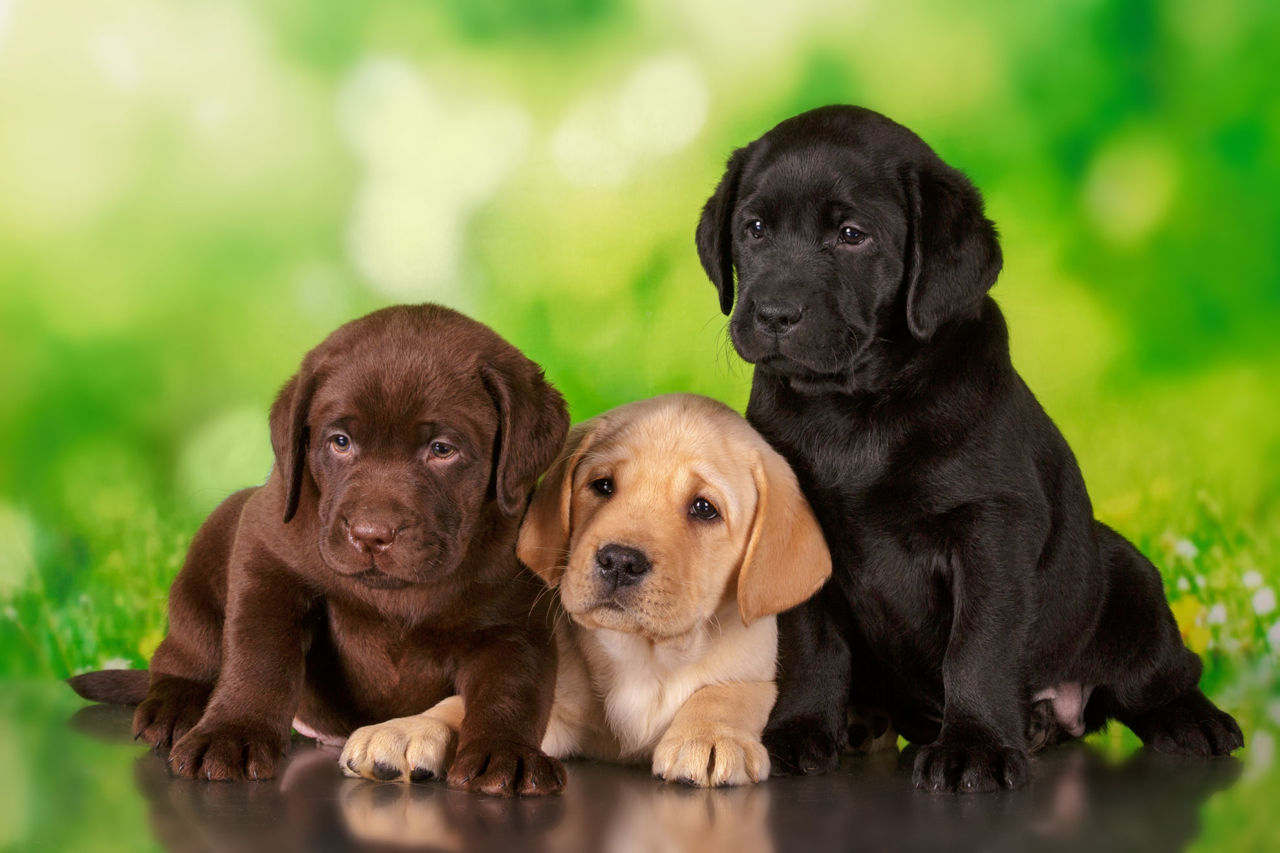Throughout history dog coat colors developed through natural and human selection. Protective colors that allowed better survival in nature were favoured by natural selection. When dog was domesticated intense human selection had a major role in the development of new coat colors.
With the emergence of different breeds coat color standards were determined for a particular breed. Selective breeding is responsible for eradication of unwanted coat colors from individual breeds. Due to intensive selection in certain breeds all dogs have the same color pattern. Most breeds have a limited set of color patterns. One reason is that due to selection some of the genes involved have become fixed. Another reason, however, is that many color patterns are recessive, and two copies of recessive alleles are required for this color to be expressed. Breeds differ from each other in genes with fixed alleles and those that are not fixed, so breeders who want to test color loci do not need to test all of them.
In most dog breeds breeders prefer certain coat colors and some are even forbidden by breeding standards. Selective breeding has a crucial influence in the desired coat color expression. Knowledge about the mechanism and genetic code involved in coat color determination is of key importance to the breeder who wants to breed puppies of certain colors.
Specific skin cells called melanocytes are producing pigment melanin responsible for the color of the skin, hair, and eyes. There are two types of pigment which determine coat color in dogs: black eumelanin and yellow-red pheomelanin. Of all the loci involved in the formation of color the most important are loci E, A, and K, as they determine whether melanocytes will produce yellow-red pheomelanin or black eumelanin. Locus E determines whether the dog will have a melanistic mask and whether the rest of the coat will have only yellow-red pheomelanin or only black eumelanin. Locus A is responsible for various coat patterns, as it regulates the release of pigment into the hair and is also involved in switching between the production of both pigments resulting in e.g. striped hair (the color of agouti we see in wolves). Locus K determines whether the dog will express the colors determined by locus A and is also responsible for the brindle pattern.
In addition to these, there are quite a few other loci that affect the amount of pigment formed. This affects color shades and color distribution throughout the body. For instance, locus B is responsible for changing black eumelanin to brown but does not affect pheomelanin. Locus D may be responsible for coat color dilution while affecting pigment intensity. Loci for coat color in dogs determine which pigment cells will produce eumelanin or pheomelanin and to what extent. Sometimes genes do not allow production of pigments which results in white coloration, e.g. locus S.
Several loci are known to be responsible for coat color patterns in dogs. Different combinations of gene alleles at these loci determine the exact color of the coat. DNA tests identify specific variants of alleles that determine coat color. The purpose is to identify whether the dog has hidden/recessive colors that are not expressed (not visible on the coat). For breeders, therefore, knowledge of the genetic background responsible for coat color is very important, because based on this they can decide to select the appropriate mating pair and thus breed offspring with the expected or desired color.





